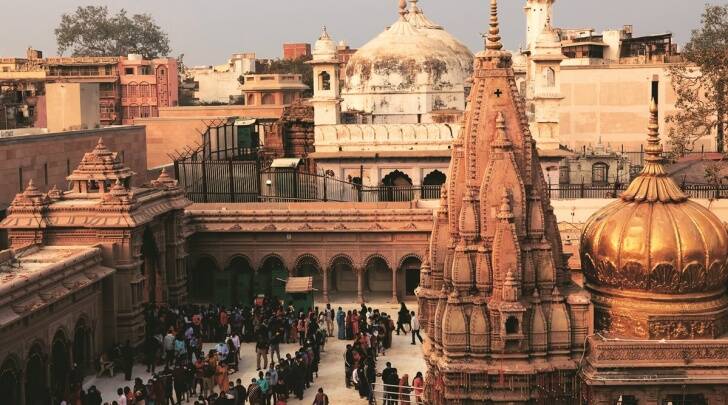Key Takeaways
- A court-ordered survey of a section of the Kashi Vishwanath temple-Gyanvapi Masjid complex in Varanasi began
About Kashi Vishwanath temple
- The Kashi Vishwanath Temple is a famous Hindu temple dedicated to Lord Shiva.
- Located in Vishwanath Gali of Varanasi, Uttar Pradesh
- The temple stands on the western bank of the holy river Ganga, and is one of the twelve Jyotirlingas, the holiest of Shiva temples.
- The temple is considered a central part of worship in the Shaiva philosophy by Hindu scriptures, on its site
- History of Kashi Vishwanath Temple
- Ancient and classical period: The temple is mentioned in the Puranas including the Kashi Khanda (section) of Skanda Purana.
- Medieval period:
- The original or the oldest of the Vishwanath temple was destroyed by Qutb-Uddin Aibak’s army when he defeated the Raja of Kannauj. Aibak was the slave general of Mohammad Ghori.
- The temple was rebuilt by a Gujarati merchant during the reign of the Slave dynasty’s Sultan Iltutmish.
- the temple was destroyed again during the rule of either Hussain Shah Sharqi (1447-1458) or Sikandar Lodhi (1498-1517).
- Mughal period
- Raja Man Singh built the temple during Mughal emperor Akbar’s rule.
- Raja Todar Mal further re-built the temple with at its original site in 1585
- In 1669 CE, Emperor Aurangzeb destroyed the temple and its lingam, and built the Gyanvapi Mosque in its place.
- British Period
- In 1742, the Maratha ruler Malhar Rao Holkar made a plan to demolish the mosque and reconstruct Vishweshwar temple at the site.However, this plan was intervened by the then Nawab of Awadh.
- In 1780, Malhar Rao’s daughter-in-law Ahilyabai Holkar rebuilt the present temple adjacent to the mosque.
Architecture
- The temple is constructed in the Nagara style of temple architecture, mostly prevalent in northern India with pious Jyotirlinga which is a dark brown colored stone enshrined in the Sanctum, placed on a silver platform.
- There is a small well in the temple called the Jnana Vapi also spelled as Gyan vapi (the wisdom well).
- The Jnana Vapi well sites to the north of the main temple and during the invasion by the Mughals the Jyotirlinga was hidden in the well to protect it at the time of invasion.
Pic Courtesy: Indian Express
Content Source: The Hindu



